The scene, at first, seems to be of two mates reminiscing about the good old days. Relaxing on the porch with a beer, tattoos poking out from under his shirt sleeves, Tyler Flanigan roundly mocks his fellow former marine Nigel McCourry.
“Remember that first patrol we went on, outside the gate, when we went into Condition One?” Flanigan says, barely able to get out the words. “You were like, ‘DEAD DOG ON THE LEFT!’”
McCourry sheepishly protests that he’d been told animal carcasses could be booby-trapped. The laughter dies off.
“That shit was crazy, man,” Flanigan says, searching McCourry’s eyes.
McCourry and Flanigan are the subjects of Dead Dog on the Left, a mini-documentary taken from a forthcoming feature film, MDMA the Movie, which explores the history of the so-called “party drug” more popularly known as ecstasy, its use in therapy, and harm reduction.
Both films are directed by Emanuel Sferios, the founder of the educational, pill-testing non-profit DanceSafe, which now has 24 branches across North America. Sferios wants to see MDMA legalised. He believes it would be safer for users if regulated, and he knows that getting it legalised for MDMA-assisted psychotherapy in particular could be a matter of life and death for many sufferers of post-traumatic stress disorder. So he’s released Dead Dog on the Left early, in the hope of challenging the stigma around the drug.
His protagonists may have survived the Iraq war, but only barely. Suicidal thoughts have stalked them both. It was Flanigan’s job to put the body parts of dead marines – his mates – into bags. Then there was the agony of attending the funerals and swallowing down survivor’s guilt to shake the hands of his comrades’ families.
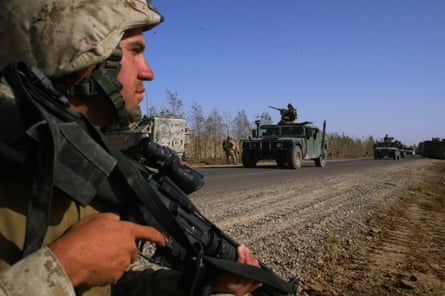
McCourry and others in his unit had accidentally shot and killed two girls. There were many more senseless deaths, such as the farmers mowed down in their fields by machine guns. Back in the States, McCourry’s suffering continued. Sleepless nights. A feeling of disassociation from all the medication prescribed to him by the Veterans Administration. Not recognising himself in the mirror.
“I’d come to see myself as a monster,” he tells Sferios.
When McCourry speaks to the Guardian from his home in Portland, Oregon, he has a measured way of talking and a peacefulness that, in the film, is starkly at odds with Flanigan’s agitation.
McCourry’s journey to healing began back in 2011 when he was watching Drugs, Inc on the National Geographic channel. “They did an hour-long episode on ecstasy,” he says, “and it was mostly a negative viewpoint, but there was this snippet where they said that researchers had been working with MDMA-assisted psychotherapy to help veterans with PTSD.”
MDMA-assisted psychotherapy is not a new practice. It has its roots in the 1970s, before the US Drug Enforcement Administration placed MDMA on the schedule of illicit substances in 1984. In 1986 a trainee therapist, Rick Doblin, founded the Multidisciplinary Association for Psychedelic Studies (Maps), which now spearheads MDMA research in the US, though it took nearly 30 years to obtain approval from the US Food and Drug Administration for the trials. Trials are also under way in Bristol in the UK, where Dr Ben Sessa is treating alcohol dependence with MDMA. So far in Australia, despite the efforts of organisations such as Psychedelic Research in Science and Medicine, only ketamine trials have got off the ground, and ketamine was already approved for medical use.
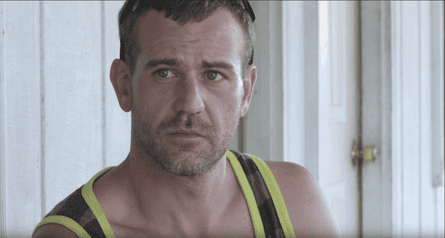
At the time McCourry caught Drugs, Inc on television, he was applying for graduate school at Furman University in South Carolina. He realised that the Maps trial featured on the program was in Charleston, just 355km away. He called up, but after a preliminary screening was told there were 150 hopefuls ahead of him. Then he mentioned he had just moved to the area. “They were looking for local participants specifically, so that put me number one on the list.”
In May 2012 McCourry did his first session of five, lying in bed, flanked by two therapists. At the beginning of the session he was given a 75mg dose of MDMA. “During those eight hours you’re addressing the most challenging situations in your life that typically you don’t like to think about,” he says. “It feels very exhausting, like it was some of the most work you’ve ever done in one day.”
The MDMA reduces activity in the amygdala, where fear-based emotions – such as those attached to traumatic memories – are processed. As Doblin, the executive director of Maps, says: “People are able to put things in context and build new neural pathways to these memories, which are recreated without the fear attached. One MDMA session can fundamentally reorder and rewire people’s brains.”
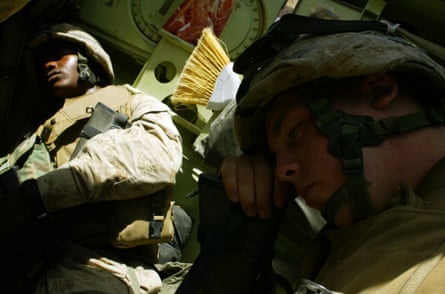
The effects of MDMA increase a feeling of connection with the therapist, particularly vital for veterans who feel their experiences are incomprehensible, which – as McCourry says – can instil in them a feeling of defensiveness. The individual is also flooded with self-compassion, something many veterans have forgotten how to feel.
McCourry calls those trials, now completed, “a transformation of the psyche”. He believed the drug would have profound effects on Flanigan, too. But he was unable to get his friend into the trial. So he took drastic action: he tracked down some underground therapists willing to do the work illegally.
Sferios met McCourry in the spring of 2014 after asking Maps to send out a letter on his behalf to participants prepared to talk to media. A little over a year later, McCourry introduced him to Flanigan. In July 2015, three months before Flanigan’s treatment was to begin, Sferios filmed a barbecue at the Flanigan family home. The scene shows Flanigan getting tanked up and playing Johnny Cash on his acoustic guitar. He tries to do a handstand but fails. Over dinner, discussion centres around him. One of his non-military buddies expresses concern for his wellbeing.
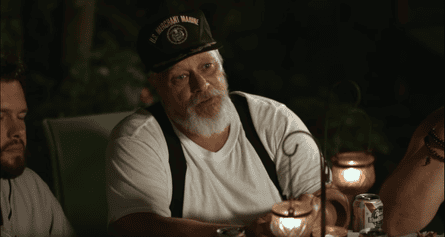
Like an earnest suitor, McCourry works hard to gain the trust of Flanigan’s father, who’s wearing his own US Marines cap, having served in the merchant marines. It seems to work – the older man’s concerns about the illegality of the mission and of the use of MDMA are assuaged. Then Flanigan snaps at Sferios to turn off the camera.
“When we first met Tyler we were very concerned,” Sferios tells the Guardian. “One of the first things he told Nigel is that he had tried to kill himself again just a month previously.”
Earlier, on the day of the barbecue, Sferios had filmed Flanigan feeding ducks at a park, and the depths of Flanigan’s desperation had spilled out. “The date for his first therapy session hadn’t been scheduled yet, and what if he killed himself before then? What if the therapy doesn’t work for him? After all, it doesn’t work for everyone. These were the questions the film crew and I were asking ourselves.”
Shortly after that barbecue, Sferios filmed McCourry and Flanigan heading west towards San Francisco to meet the underground therapists in a country cottage. Sferios contributed to getting Flanigan to California, and paid for his three sessions.
The identity of the man and woman are disguised. Sferios thinks that risks for underground therapists are lessening – especially given the prospect of legalisation – but they are still wary. “There are academic certificate courses now, at some private colleges, in MDMA-assisted therapy, preparing therapists for 2021 when the drug becomes legal,” he says. “So I think the risk is far less that a therapist would get their licence taken away for providing MDMA therapy. At the same time, everyone I know who does it is cautious. Nobody advertises and clients are only referred via word of mouth.”
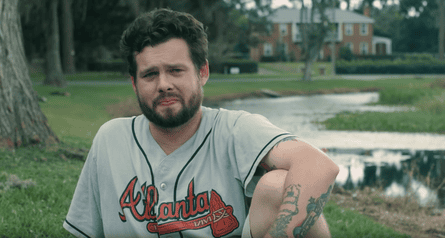
Now that MDMA-assisted psychotherapy has “breakthrough therapy” designation by the FDA, critics of the practice in the medical community are hard to find. But it’s not a miracle cure – mental health maintenance is likely to be required. A few years after treatment, McCourry noticed he was feeling anxious and overwhelmed. He got back on track by seeing a counsellor. “Since the MDMA therapy I’m able to recognise when something comes up that I need to talk about,” he says.
McCourry hopes that the therapy will be adopted by the Veterans Administration and Department of Defense. “If you look at the amount of money that the United States spends treating PTSD in veterans, it’s enormous,” he says. “If you can cure PTSD after three sessions of MDMA therapy then you don’t have to provide a veteran with medications for the rest of their life and talk therapy once a month and all of these other therapeutic modalities that end up being pretty resource-depleting.”
These days, McCourry lives in Portland. After getting his masters in chemistry – while receiving MDMA treatment – he started making extracts from medicinal plants. He has moved into cannabis science and has been working with a company that extracts cannabidiol from industrial hemp.
Flanigan, who had been self-medicating with alcohol to the point that when he took the MDMA he had to have a beer with it to avoid withdrawal, ends the film in a far calmer, more self-accepting place.
“Tyler is doing well,” Sferios says. “He’s living in Florida, taking care of his grandfather and making music.” Two of his songs are used in Dead Dog on the Left. Crowdfunding is under way to finance the completion of the full-length feature.
“We know MDMA works on a large majority of people suffering from PTSD,” Sferios says. “Our goal was not to prove that to anyone; the FDA studies are the real proof. Rather, I wanted to make an emotional film that told a story. And I think the love and friendship between these two veterans is what really comes across.”
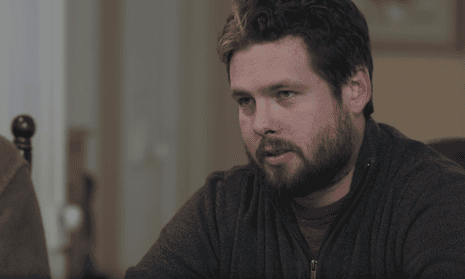
Comments (…)
Sign in or create your Guardian account to join the discussion